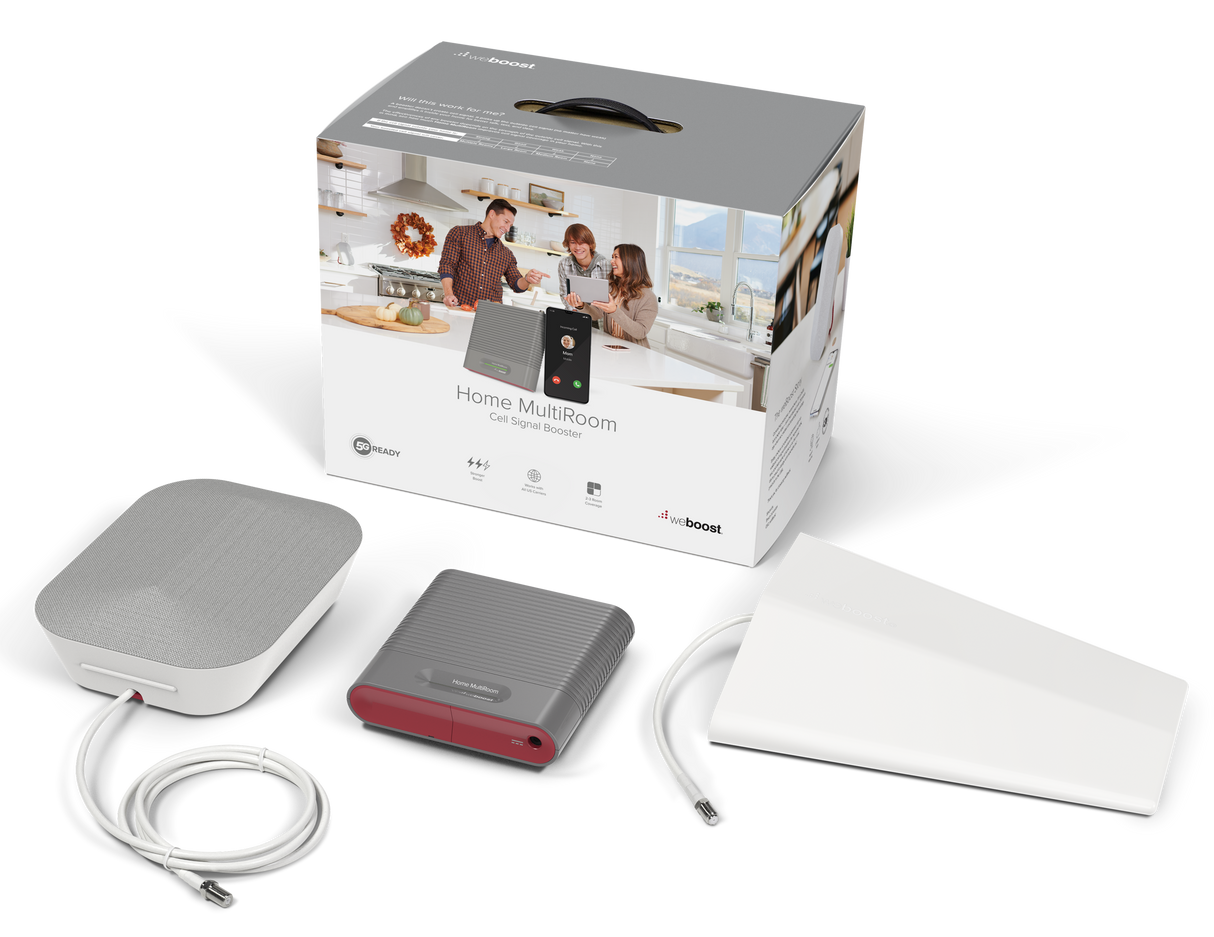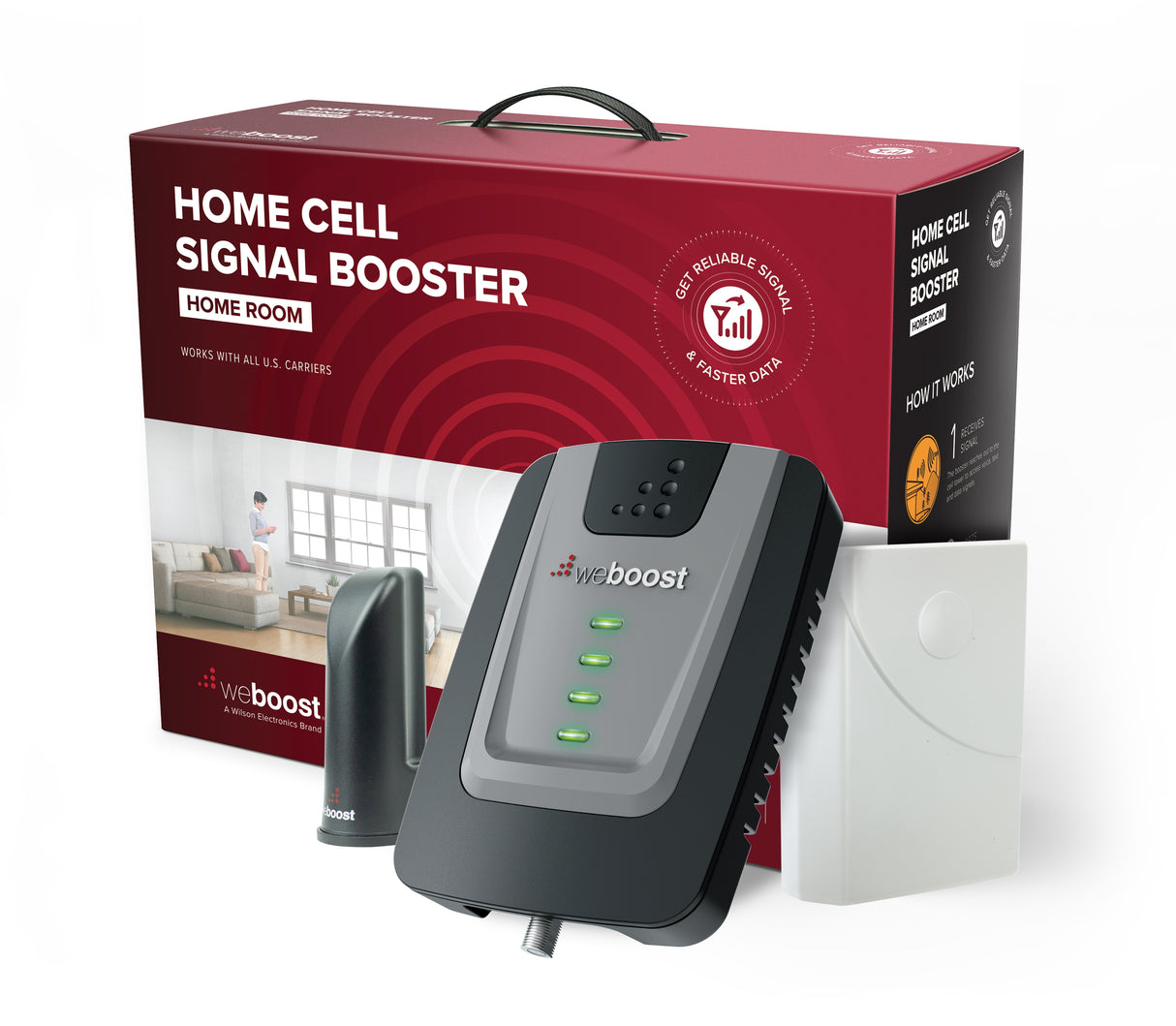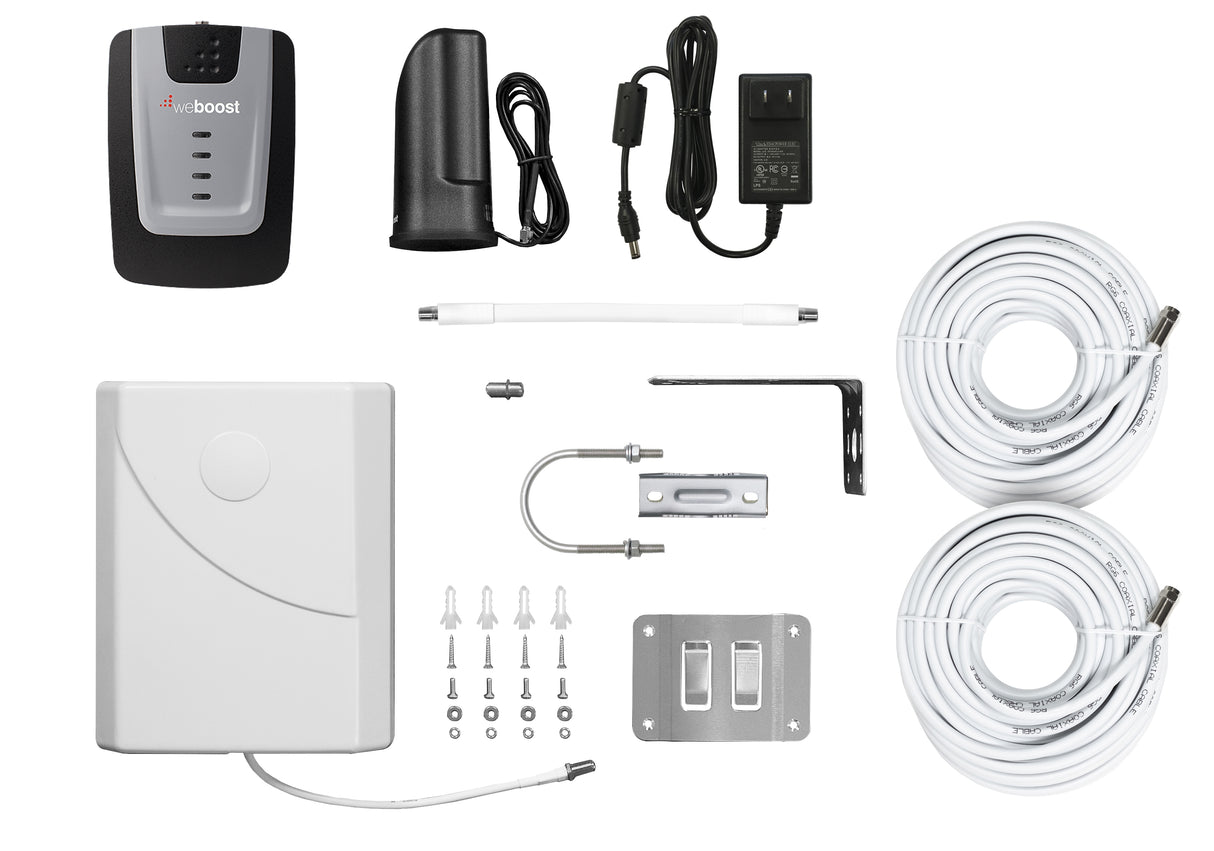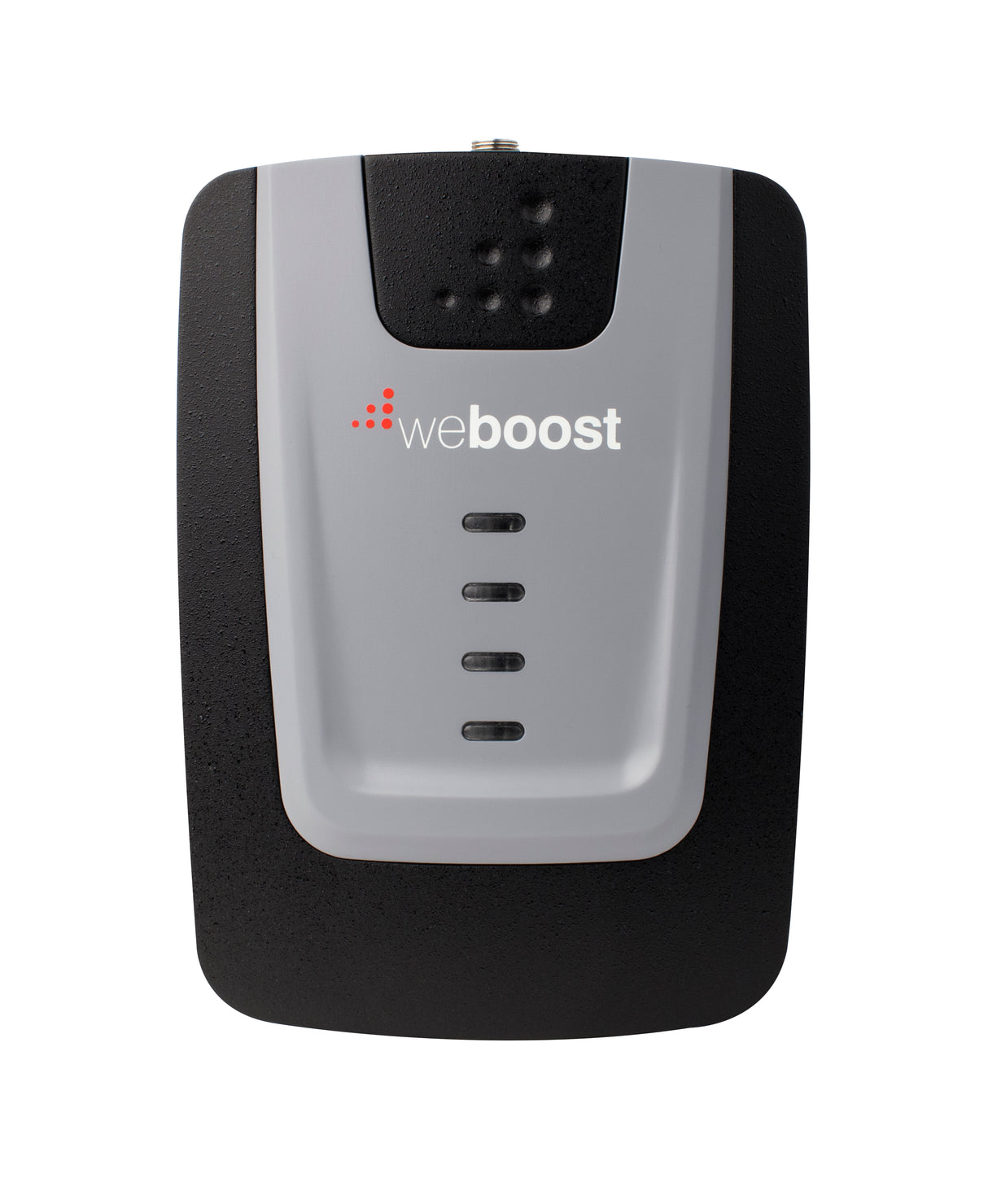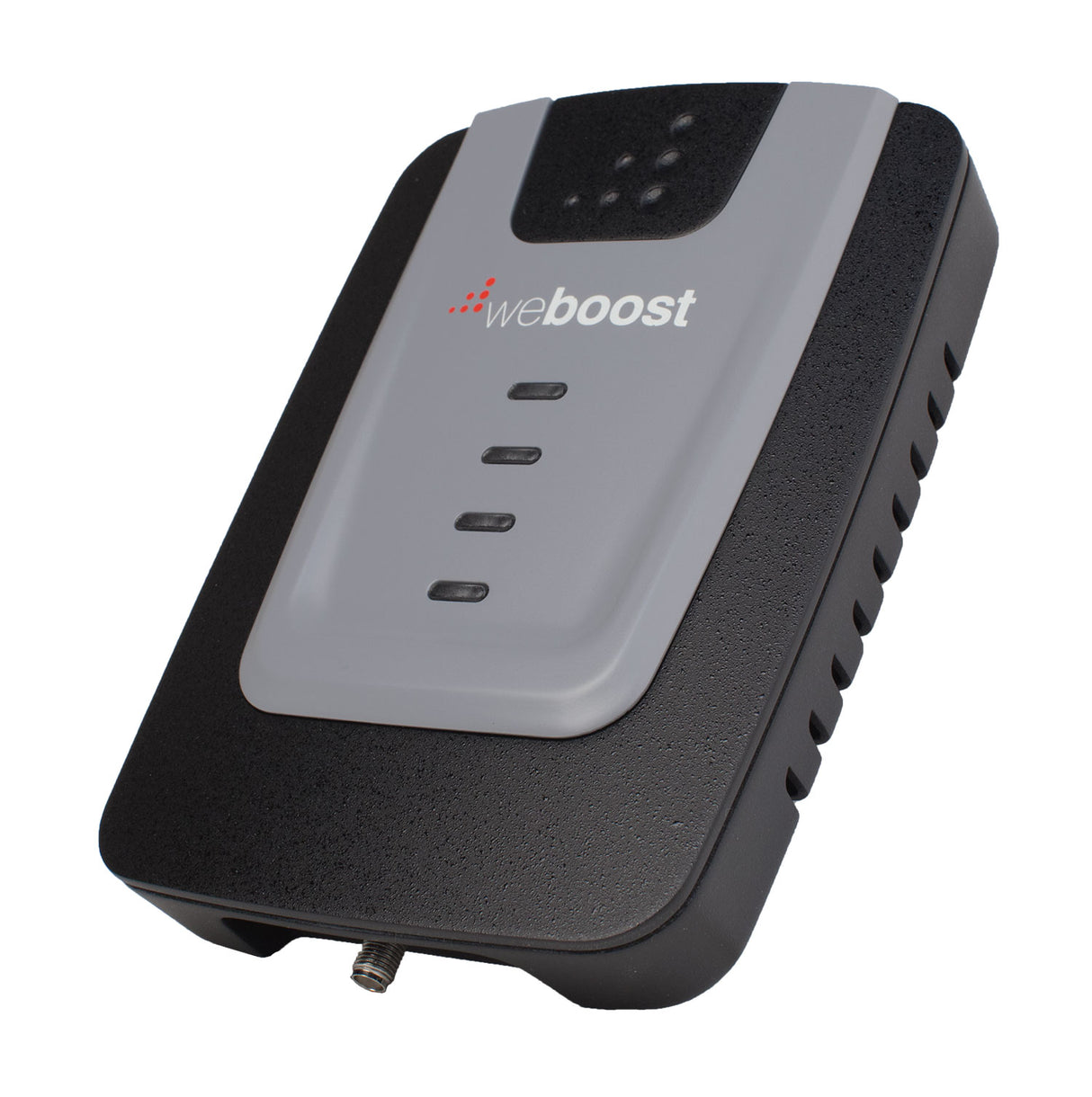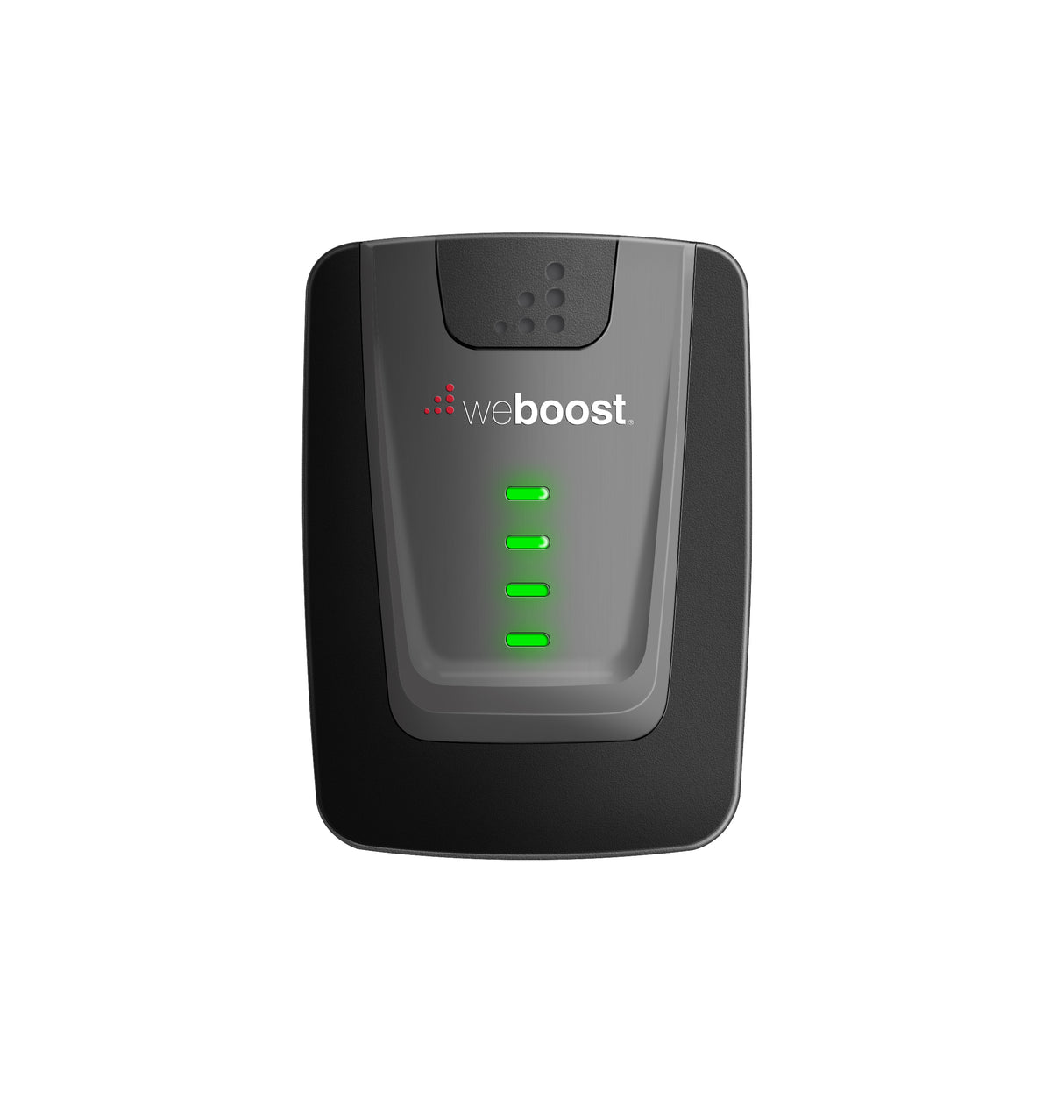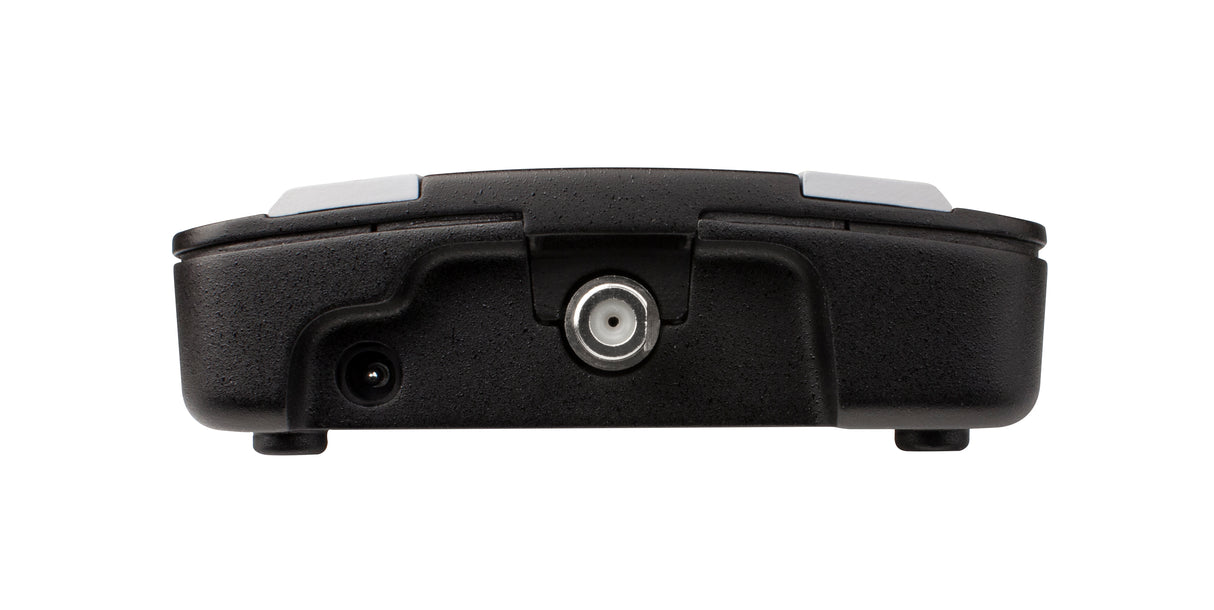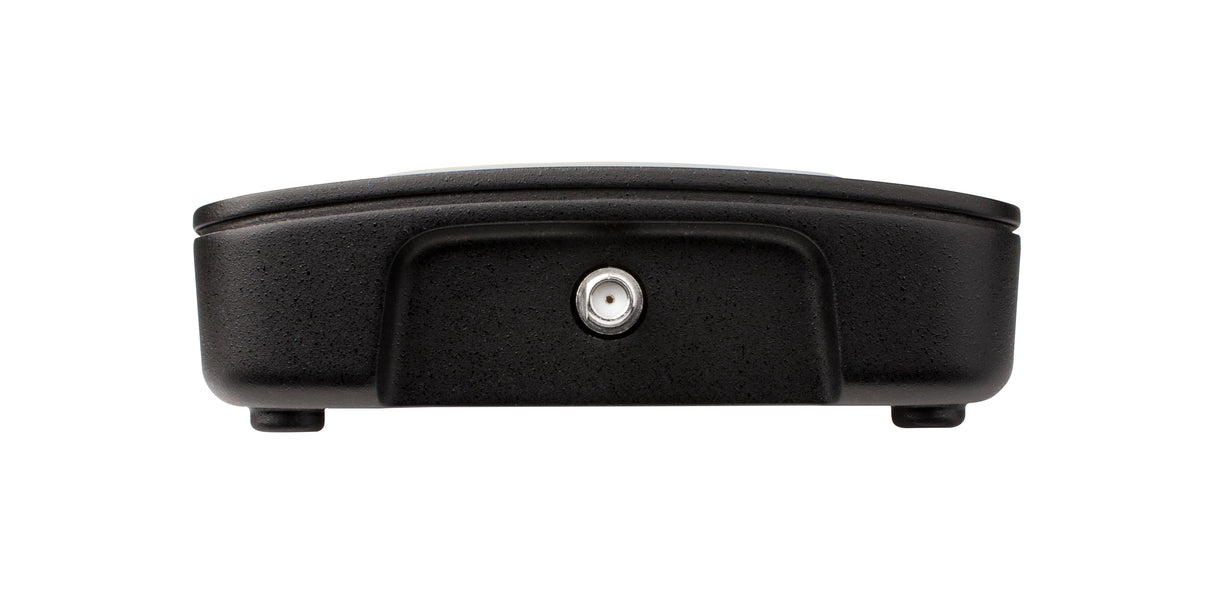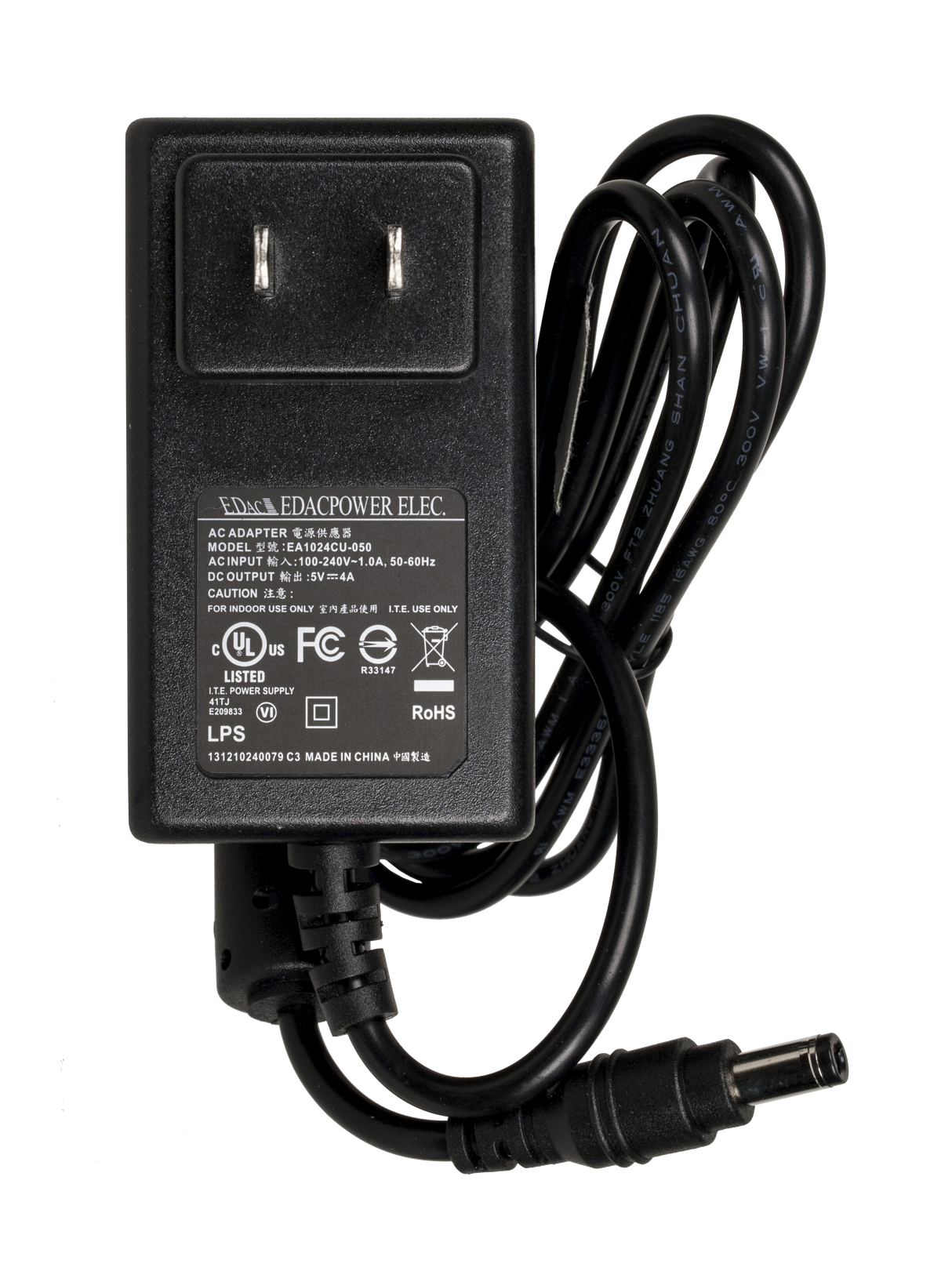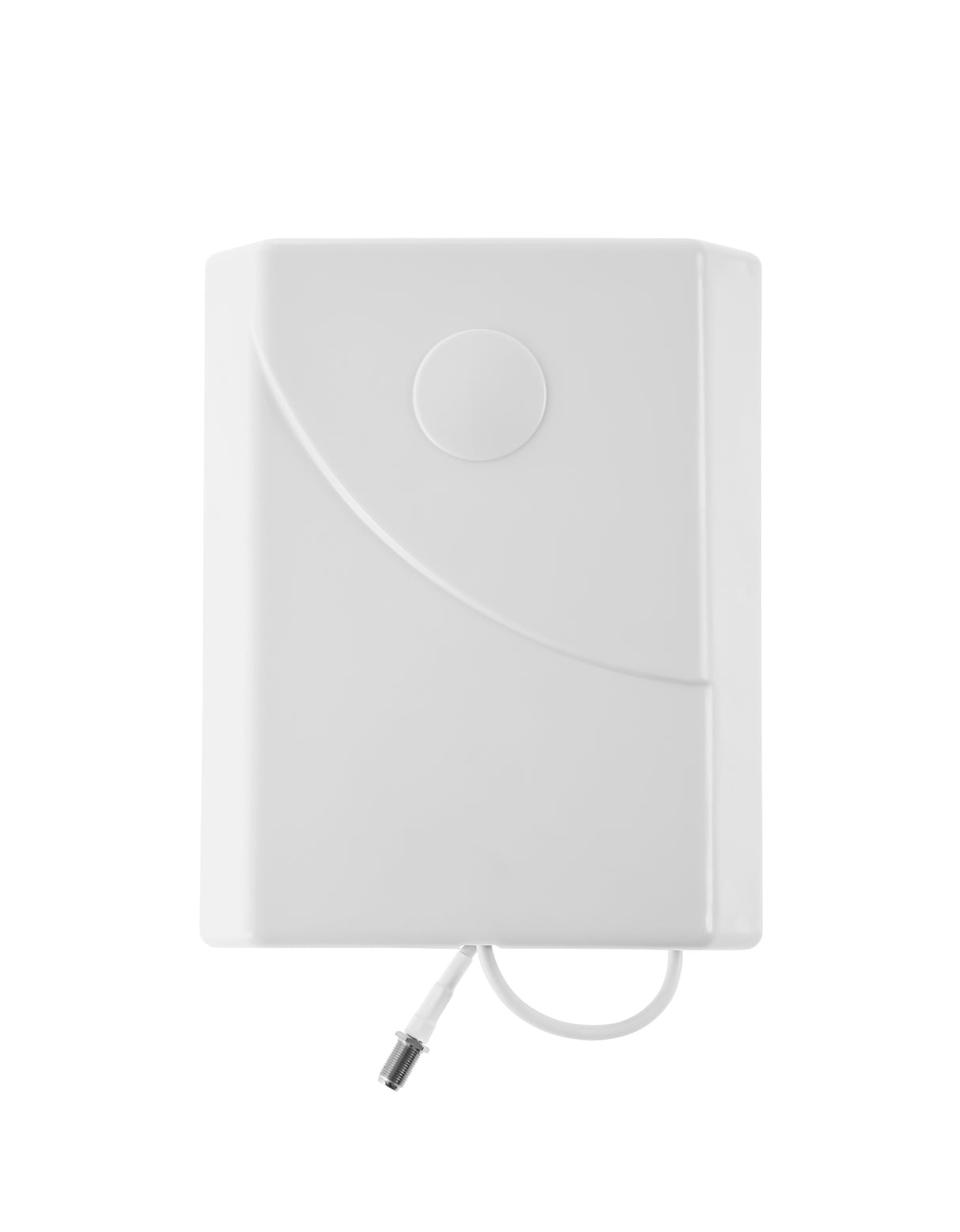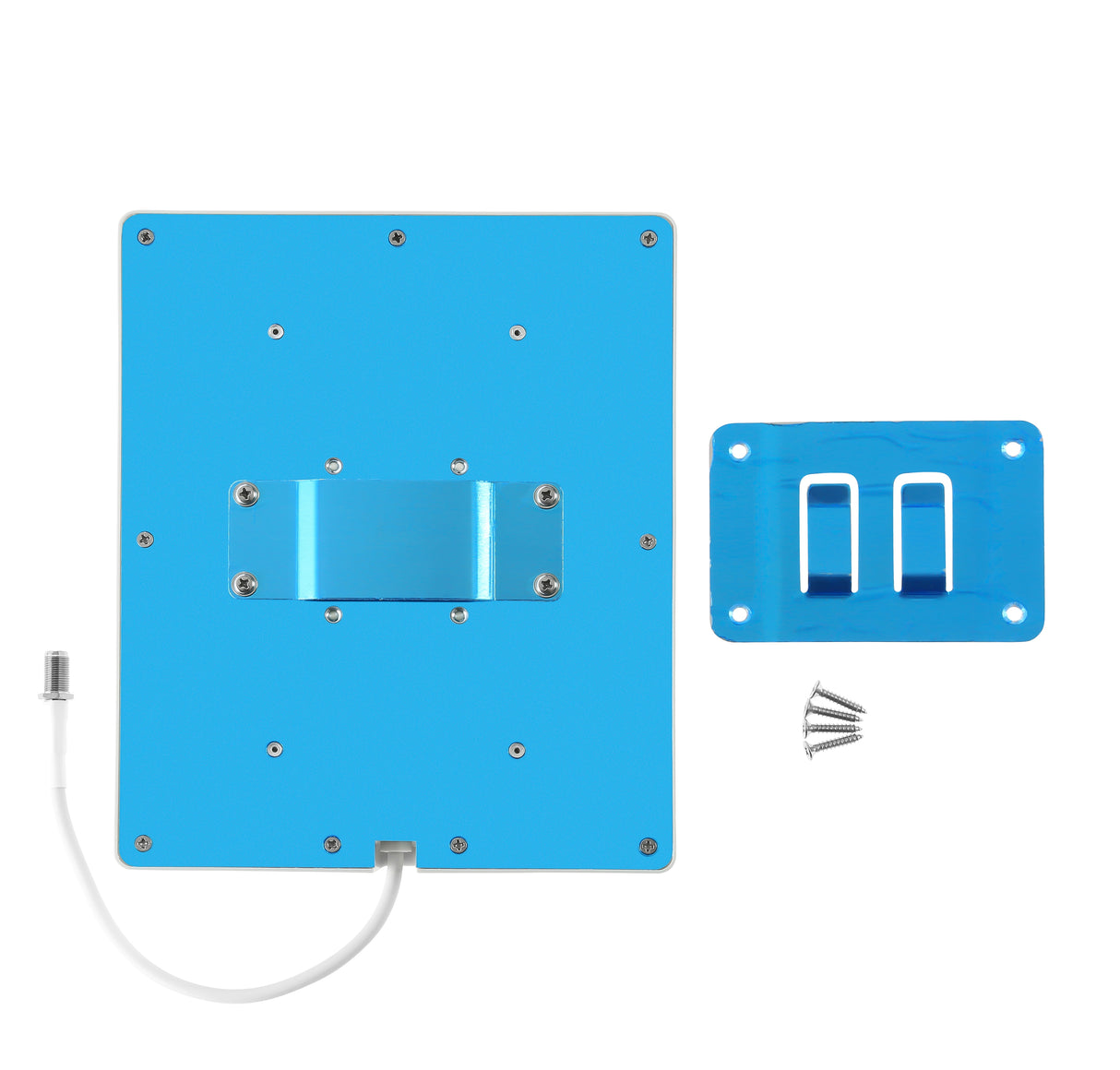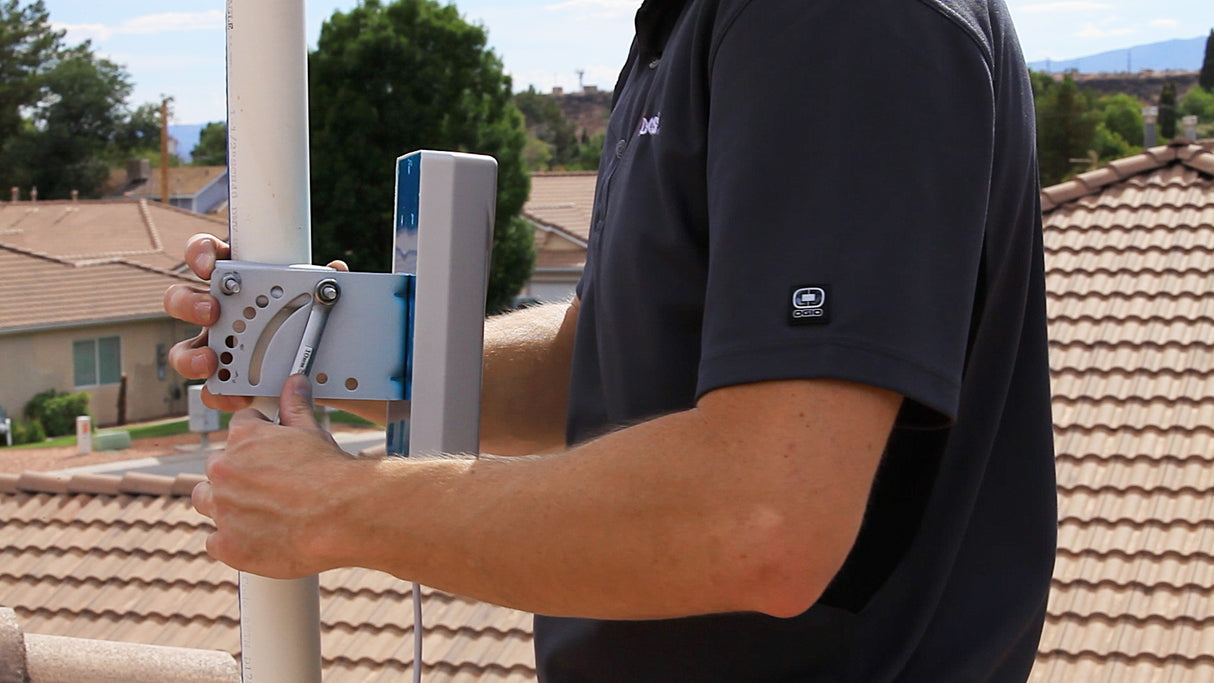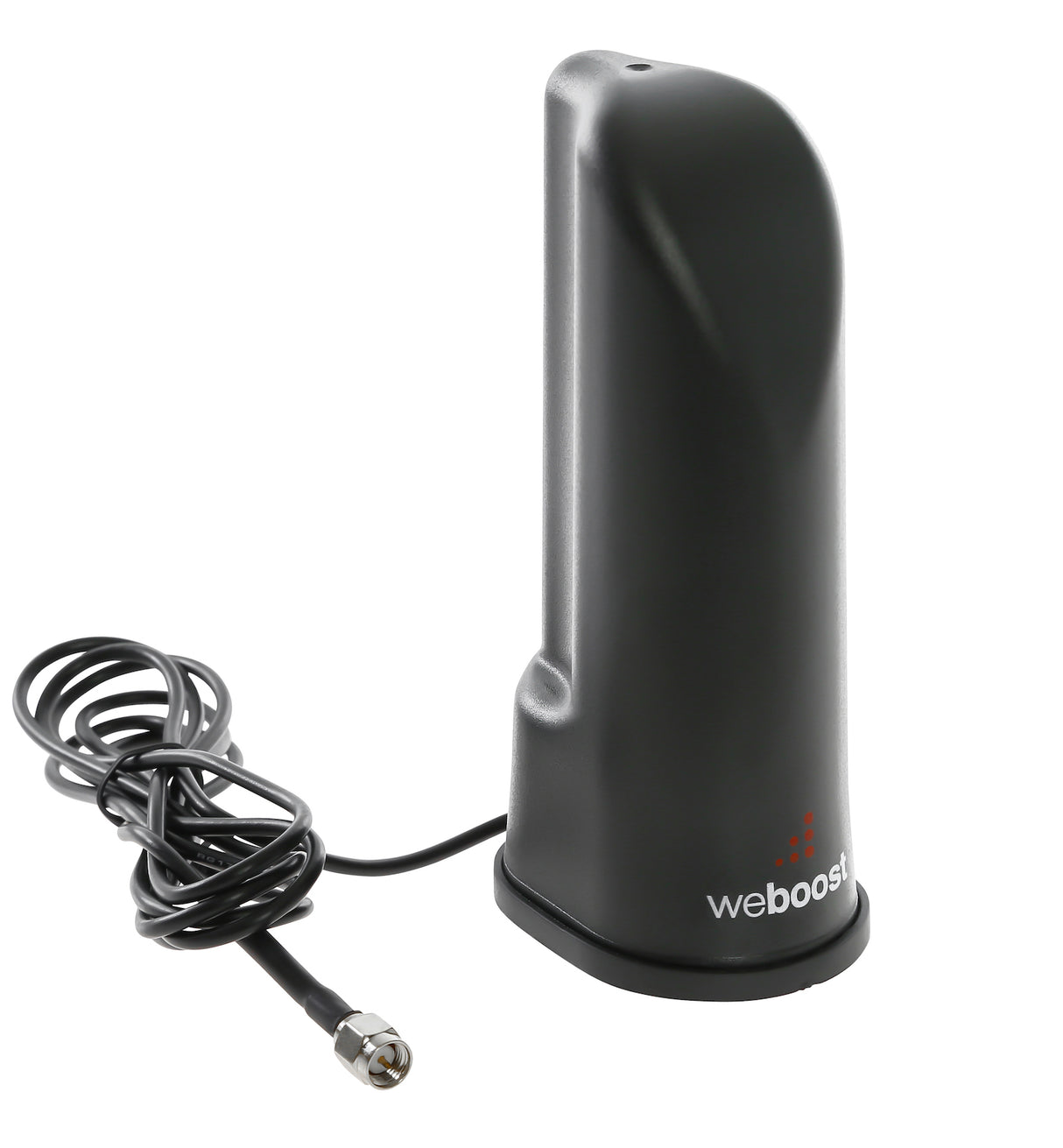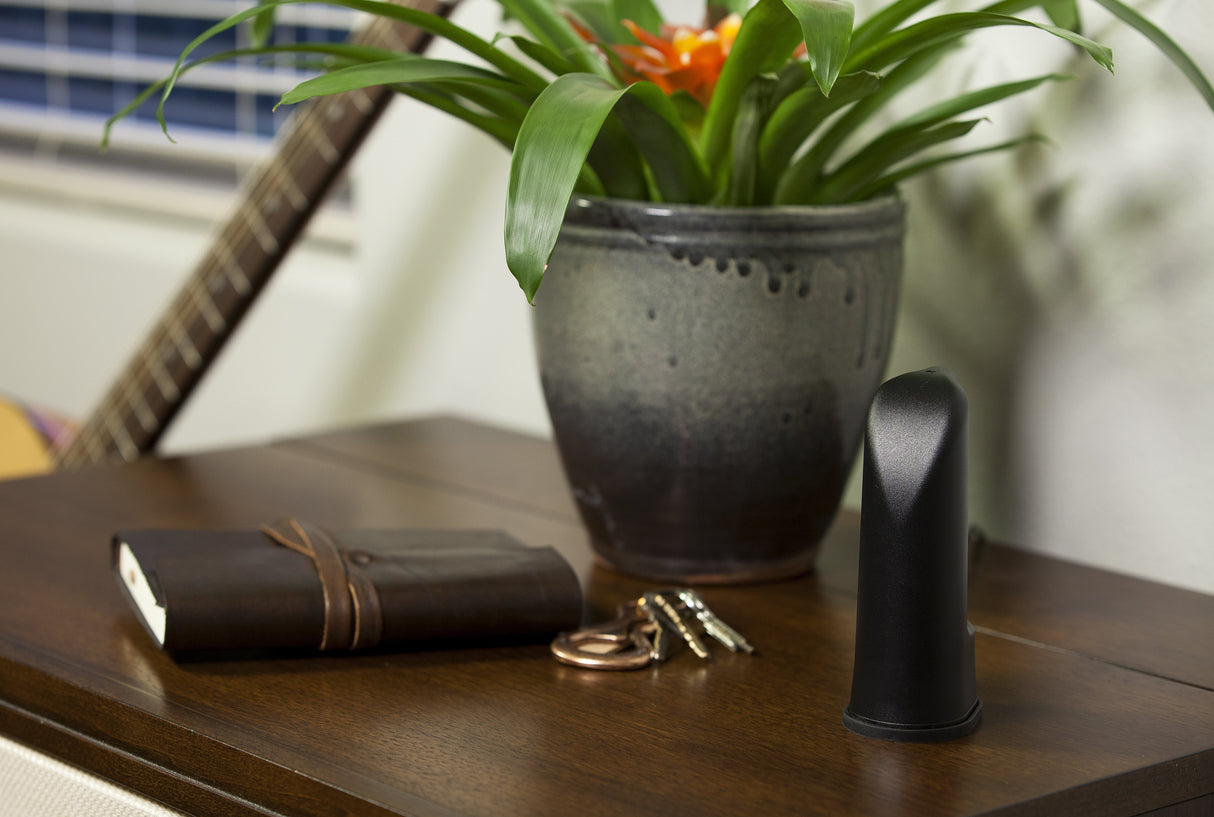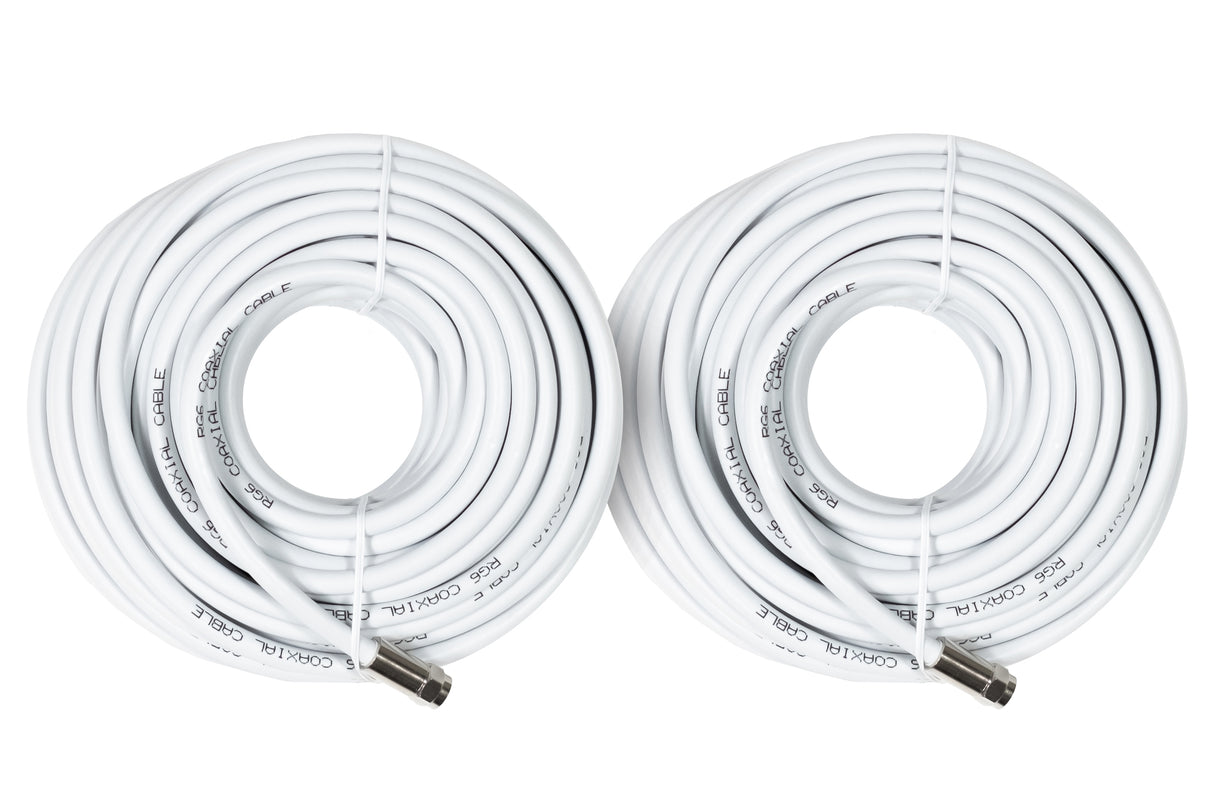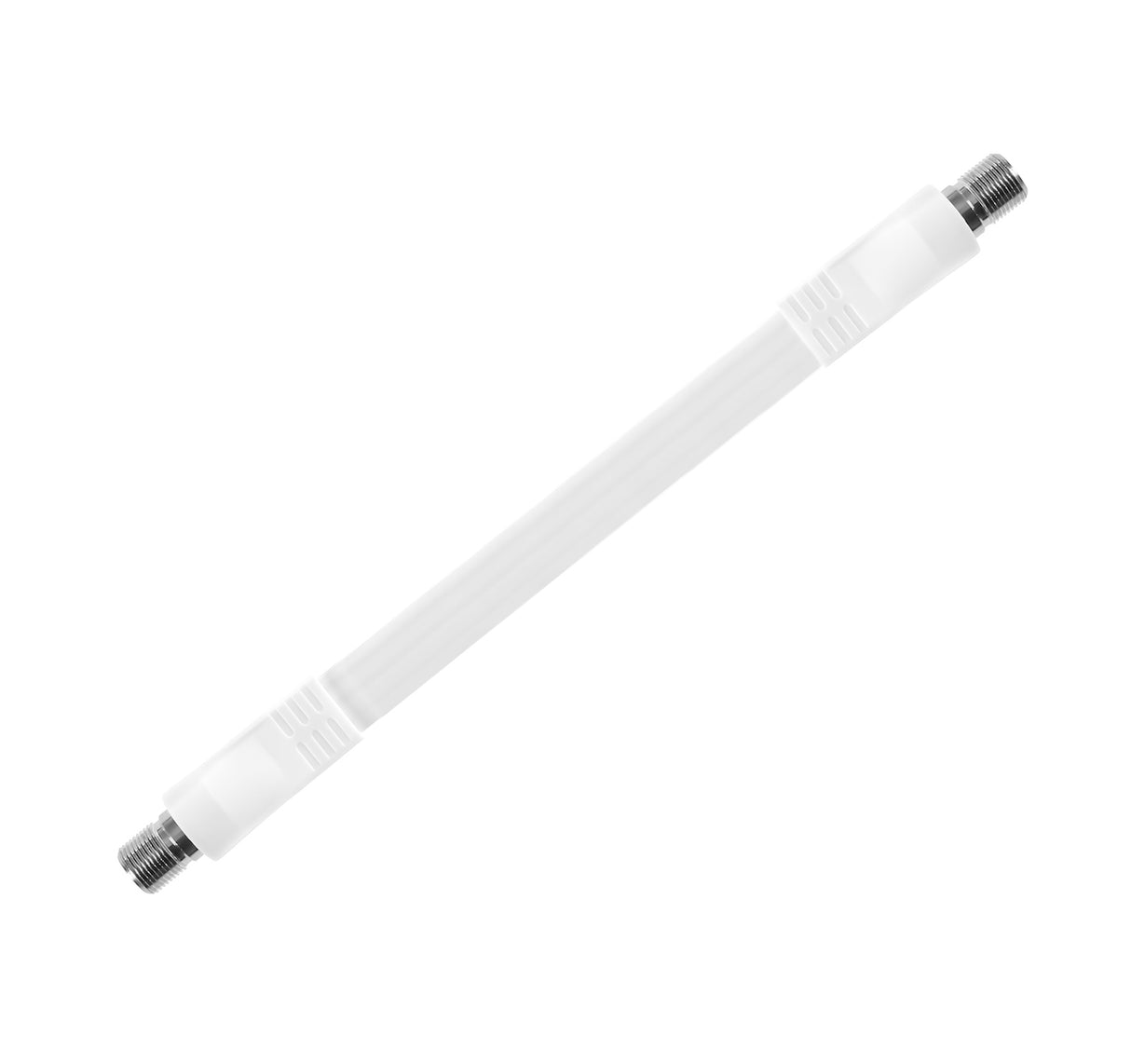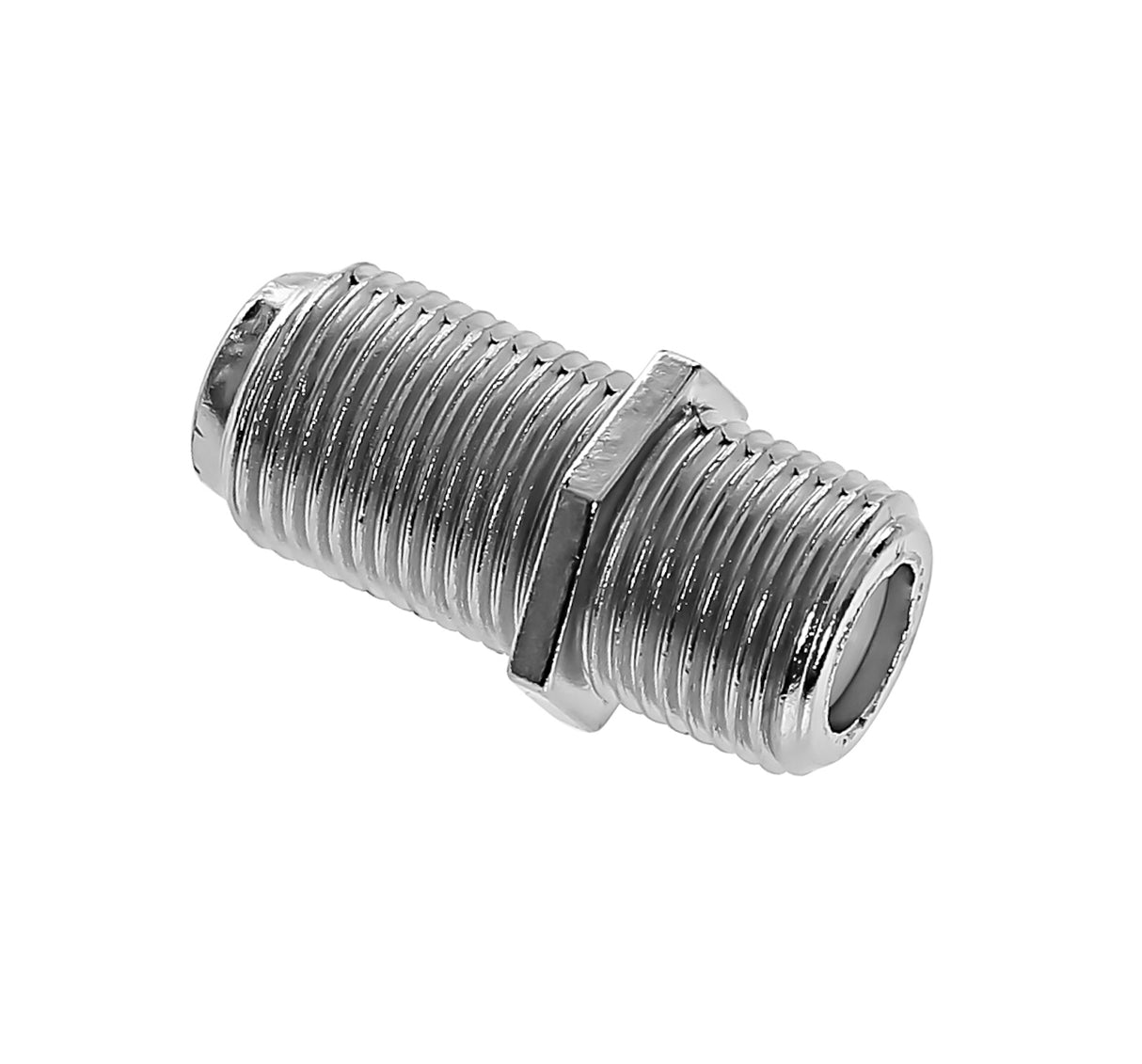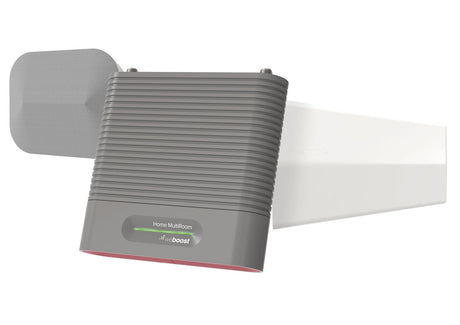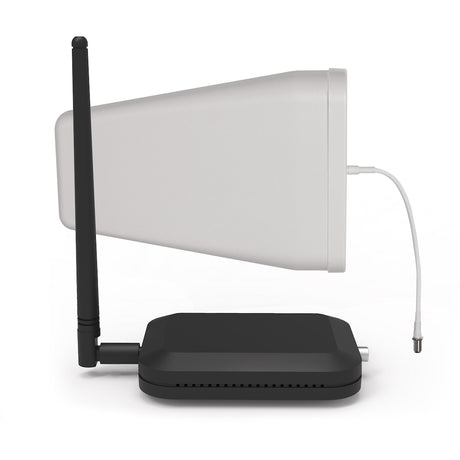Installation & Coverage: Includes professional installation. Boosts signal for maximum home coverage.
Unique Feature: First residential booster with full-service installation, ensuring optimal placement and performance.
Design: Sleek, contemporary design with anodized gray and powder-coated black aluminum casing.
Coverage & Antenna Options: Coverage up to 25,000 sq. ft. Multiple outdoor and indoor antenna options.
Flexibility: Available with 1 to 4 inside antennas to suit various building sizes and layouts.
Ideal Use: Perfect for homes and small businesses needing customizable setup options.
How to Choose the Right Antennas for Your Booster
Outside Antennas:
- Yagi Directional Antenna: This antenna is more powerful because it focuses on sending and receiving signals in one direction. It works best when there are no major obstacles blocking its path to the cell tower. It's not ideal for areas with large obstructions like hills or buildings.
- Omni Antenna: This antenna sends and receives in all directions, so it's better for hilly areas or if you need to support multiple carriers with towers in different directions. It doesn’t need to be aimed, but it also isn’t as strong as the Yagi antenna.
- High Gain LPDA Antenna: Perfect for areas with very weak signals, this antenna significantly boosts signal strength. It needs a clear line of sight to the cell tower and requires a sturdy mount because of its size.
Inside Antennas:
- Panel Antenna: Can be placed on walls or ceilings and directs the signal towards a specific area. This antenna is great for homes and tall ceilings in buildings.
- Standard Dome Antenna: Designed to mounted on the ceiling, this antenna spreads the signal evenly throughout the area. It's best suited for drop ceilings or spaces where cables can be run above the ceiling.
- Ultra-Thin Dome Antenna: This slim antenna also mounts to the ceiling, but is much is less noticeable. It's much stronger than a standard dome antenna, making it a great choice for places where both looks and signal strength are important.
Tips for Choosing:
- Choose Omni Antennas for general coverage with no aiming required.
- Choose Directional Antennas (Yagi or LPDA) when you can point directly at a cell tower and need stronger signal and more inside coverage.
- Interior Size Considerations: One antenna per 750-1,500 sq ft in homes, or 1,500-2,500 sq ft in open spaces like offices and warehouses.
DIY Friendly: Comes with all necessary components for DIY installation.
Coverage: Enhances signal for homes with strong to medium outside signal.
Aesthetics: Modern design that blends well with home interiors.
Coverage & Design: Covers up to 3 large rooms. Stylish fabric-covered inside antenna with a built-in kickstand.
Installation: Easy wall-mount installation with no need for drilling, using 3M Command strips.
Unique Feature: Exclusive MultiRoom inside antenna for superior performance.
Coverage & Setup: Ideal for enhancing signal in a single large room or small office.
Compact Design: Small footprint with all components included for straightforward setup.
Efficiency: Boosts cellular signals significantly, enhancing talk, text, and high-speed internet.
Compact & Efficient: Designed for small spaces like home offices or apartments, fits easily on a shelf.
Simple Installation: Features an integrated inside antenna for ease of setup.
Broad Compatibility: Works with all U.S. carrier networks and is engineered for 5G readiness.
Installation & Coverage: Includes professional installation. Boosts signal for maximum home coverage.
Unique Feature: First residential booster with full-service installation, ensuring optimal placement and performance.
Design: Sleek, contemporary design with anodized gray and powder-coated black aluminum casing.
-
weBoost 470144R Home MultiRoom Signal Booster (Certified Refurbished)
$437.99Unit price /Unavailable -
weBoost 472120R Home Room Signal Booster Kit (Certified Refurbished)
$297.99Unit price /Unavailable -
weBoost 470166R Home Studio Signal Booster Kit (Certified Refurbished)
$297.99Unit price /Unavailable
Frequently Asked Questions (FAQ)
How can I boost my cell phone signal in my house?
How can I boost my cell phone signal in my house?
The most effective way to boost your cell phone signal inside your home is by using a cell phone signal booster. Here’s how it works:
- External Antenna: Installed outside your home, ideally in an area with the strongest existing signal (like your roof or an exterior wall), it captures the weak cell signal from the nearest tower.
- Amplifier: The weak signal is then passed to an amplifier inside your home, which boosts it significantly.
- Internal Antenna: Finally, the amplified signal is broadcast indoors through the internal antenna(s), giving you reliable calls and fast data speeds.
This process also works in reverse, boosting the cell signal from your phone in the house out to the distant cell towers.
Step-by-Step Installation
- Step 1: Determine the part of your home that needs better signal using your phone’s signal strength indicator.
- Step 2: Mount the external antenna at the highest point or where the signal is strongest outside of your house.
- Step 3: Connect the external antenna to the amplifier via a cable. Run another cable from the amplifier to the inside antenna(s).
- Step 4: The internal antenna(s) should be located in the center of the space that needs better signal. The boosted signal will be broadcast throughout the area around the inside antenna(s).
What is the best home cell phone booster?
What is the best home cell phone booster?
Choosing the best home cell phone booster depends on several factors specific to your needs. Here’s how you can determine the right booster for your home:
- Coverage Area: Determine the size of the area where you need improved signal. Boosters vary in the coverage they provide, from single rooms to entire homes. Consider whether you need to enhance signal in just one room or across multiple levels and rooms.
- Signal Strength: Check the existing signal strength outside your home. Boosters can amplify weak signals, but the initial outside signal quality can influence the effectiveness of the booster. Use a signal meter or your phone’s signal strength indicator to gauge this.
- Installation Preferences: Decide if you prefer a DIY installation or if professional installation is important to you. Some boosters are easy to install on your own, while others might benefit from professional installation to ensure the best performance and placement.
Types of Boosters:
- Room-Specific Boosters: Ideal for enhancing signal in a single room or small area. These are usually less expensive and easier to install.
- Whole-Home Boosters: Designed to cover larger areas or multiple floors. These systems are more robust and generally more costly but offer comprehensive coverage.
- Boosters with Professional Installation: Some boosters come with the option for professional installation. This can be a great choice if you want to ensure that the system is set up optimally, especially in complex home layouts or where the signal is particularly poor.
How well do cell phone boosters work?
How well do cell phone boosters work?
Cell phone boosters are great solutions that have been independently tested & approved for use by both the major cell carriers and the FCC. These devices are specifically designed to significantly improve cellular connectivity in many different environments.
How Well Boosters Work in Different Settings:
- Amplifying Weak Signals: If there is a weak signal available, then a signal booster can amplify it to a much stronger level. Users typically experience a substantial reduction in dropped calls and a noticeable increase in data speeds, often seeing improvements of signal strength by up to 32 times the original levels.
- Reducing Signal Noise: In urban environments where multiple cell towers can create a noisy signal environment, a booster with a directional outside antenna can help to eliminate some interference and improve the quality of your connection. This means more reliable calls and faster data speeds for you.
- Enhancing Rural Connectivity: For rural areas where cell towers are limited and signal is typically weak, boosters with extremely high-gain antennas, like the LPDA, can make a huge difference in your cell signal. They can capture signal that would otherwise be too weak to use, and then boost it up to a usable level. In these situations, users often go from having no usable signal to being able to make calls and even use data.
Why do I have bad cell phone reception in my house?
Why do I have bad cell phone reception in my house?
There are several reasons why your cell phone reception might be poor at home, ranging from the materials used in your house to its location.
Building Materials: The construction of your home is one of the biggest factors. Materials like brick, concrete, and metal can block or weaken cell signals. Even some kinds of glass, especially those with energy-efficient coatings, can reduce the signal strength entering your home.
Rural Location: Living in a rural area can also affect your reception. Cell towers might be farther away, making the signal weaker by the time it reaches your home. If there are fewer towers, there’s also less chance for your phone to catch a strong signal.
Combination of Factors: Houses that combine these issues face the most challenges. For example, a home in a rural area made of thick brick or concrete will likely struggle more with cell reception. The distance from the tower and the blocking materials together create a tough situation for cell signals to penetrate effectively.
















































































































